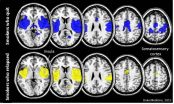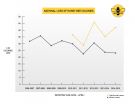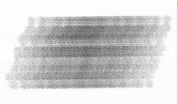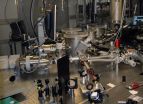A helping paw for a sinking rat
Study shows that rats will try to save members of their own species from drowning
2015-05-13
(Press-News.org) Rats have more heart than you might think. When one is drowning, another will put out a helping paw to rescue its mate. This is especially true for rats that previously had a watery near-death experience, says Nobuya Sato and colleagues of the Kwansei Gakuin University in Japan. Their findings are published in Springer's journal Animal Cognition.
Recent research has shown that a rat will help members of its own species to escape from a tubelike cage. The helping rat will show such prosocial behavior even if it does not gain any advantage from it. To see whether these rodents will also help when one of their own is about to drown, Sato's team conducted three sets of experiments involving a pool of water. One rat was made to swim for its life in the pool, with another being in a cage adjacent to it. The soaked rat could only gain access to a dry and safe area in the cage if its cagemate opened a door for it.
Sato's team found that rats quickly learned that to help their distressed and soaked fellow rat, they had to open the door. The rats were, however, only quick to open the door when there was actually a truly distressed cagemate nearby who needed to be saved. The experiments also showed that rats dislike being soaked. Those who had a previous experience of being immersed in water were also much quicker at learning how to save a cagemate than those who had not been immersed.
The researchers also watched what happened when rats had to choose between opening the door to help their distressed cagemate or accessing a different door to obtain a chocolate treat for themselves. In most cases, rats chose to help their cagemate before going for the food. According to Sato, this suggests that, for a rat, the relative value of helping others is greater than the benefit of a food reward.
The results indicate that rats show empathy. These rodents can share in the emotional state of members of their own species, in this case that of distressed animals.
"Our findings suggest that rats can behave prosocially and that helper rats may be motivated by empathy-like feelings towards their distressed cagemate," says Sato, who believes that studies of sociality, such as empathy in rodents, are important for understanding the underlying neural basis of prosocial behavior as well as evolutionary aspects.
INFORMATION:
Reference: Sato, N. et al. (2015). Rats demonstrate helping behaviour towards a soaked conspecific, Animal Cognition, DOI 10.1007/s10071-015-0872-2
[Attachments] See images for this press release:
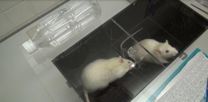
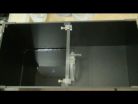
ELSE PRESS RELEASES FROM THIS DATE:
2015-05-13
DURHAM, N.C. - Smokers who are able to quit might actually be hard-wired for success, according to a study from Duke Medicine.
The study, published in Neuropsychopharmacology, showed greater connectivity among certain brain regions in people who successfully quit smoking compared to those who tried and failed.
The researchers analyzed MRI scans of 85 people taken one month before they attempted to quit. All participants stopped smoking and the researchers tracked their progress for 10 weeks. Forty-one participants relapsed. Looking back at the brain scans of the 44 ...
2015-05-13
Beekeepers across the United States lost more than 40 percent of their honey bee colonies during the year spanning April 2014 to April 2015, according to the latest results of an annual nationwide survey. While winter loss rates improved slightly compared to last year, summer losses--and consequently, total annual losses--were more severe. Commercial beekeepers were hit particularly hard by the high rate of summer losses, which outstripped winter losses for the first time in five years, stoking concerns over the long-term trend of poor health in honey bee colonies.
The ...
2015-05-13
MANHASSET, NY -- The Feinstein Institute for Medical Research, the research arm of the North Shore-LIJ Health System, and SetPoint Medical Inc., a biomedical technology company, today released the results of research on the therapeutic potential of vagus nerve stimulation. In a paper published by Bioelectronic Medicine, Kevin J. Tracey, MD, and his colleagues at the Feinstein Institute, explore how low-level electrical stimulation interacts with the body's nerves to reduce inflammation, a fundamental goal of bioelectronic medicine.
Prior to this study, it was not understood ...
2015-05-13
Scientists at The University of Manchester have made an important discovery about how certain cells stick to each other to form tissue.
The team from the Faculty of Life Sciences studied how cells in the skin and heart are bound together through structures called desmosomes. They wanted to understand how these junctions between the cells in the tissue are so strong.
Desmosomes are specialised for strong adhesion. They bind the tissue cells together to resist the rigours of everyday life and their failure can result in diseases of the skin and heart, including sudden ...
2015-05-13
A part of the performance degradation mechanism of the advanced, electrodeless, helicon plasma thruster with a magnetic nozzle, has been revealed by the research group of Dr. Kazunori Takahashi and Prof. Akira Ando at Tohoku University's Department of Electrical Engineering.
An electric propulsion device is a main engine, and a key piece of technology for space development and exploration. Charged particles are produced by electric discharge and accelerated, i.e. momentum is transferred to them via electromagnetic fields. The thrust force is equivalent to the momentum ...
2015-05-13
Digital signatures are mechanisms for authenticating the validity or authorship of a certain digital message and they aim to be digital counterparts to real (or analog) signatures. The concept was introduced by Diffie and Hellman in 1976. Notice that, when certified, digital signatures have the same legal power as traditional signatures.
With the advent of quantum computation new threats to security became a near future reality and all known digital signatures schemes are vulnerable, compromising fundamental properties of signature schemes: authenticity and authorship ...
2015-05-13
Chicago (13 May, 2015)- In the latest issue of the Bulletin of Atomic Scientists, published by SAGE, experts from the United States, Russia, and China present global perspectives on ambitious nuclear modernization programs that the world's nuclear-armed countries have begun.
In the latest edition of the Bulletin's Global Forum, Georgetown University professor Matthew Kroenig argues that:
"Failure to modernize would not contribute to disarmament - but more than that, it would be irresponsible. A crippled US nuclear force would embolden enemies, frighten allies, generate ...
2015-05-13
The recombination of electron shells in molecules, taking just a few dozen attoseconds (a billionth of a billionth of a second), can now be viewed "live," thanks to a new method developed by MIPT researchers and their colleagues from Denmark, Japan and Switzerland. An article detailing the results of their study has been published in the journal Nature Communications.
In recent years, scientists have learned how to study ultrafast processes taking place at the atomic and molecular levels, and research in this field is expected to yield some very important results. In ...
2015-05-13
This news release is available in German. Chloroplasts are the solar cells of plants and green algae. In a process called photosynthesis, light energy is used to produce biochemical energy and the oxygen we breathe. Thus, photosynthesis is one of the most important biological processes on the planet. A central part of photosynthesis takes place in a specialized structure within chloroplasts, the thylakoid membrane system. Despite its apparent important function, until now it was not clear how this specialized internal membrane system is actually formed. In a collaborative ...
2015-05-13
Amsterdam, May 13, 2015 - A new family of molecules that kill cancer cells and protect healthy cells could be used to treat a number of different cancers, including cervical, breast, ovarian and lung cancers. Research published in EBioMedicine shows that as well as targeting and killing cancer cells, the molecules generate a protective effect against toxic chemicals in healthy cells.
Cells can become cancerous when their DNA is damaged. Many different things can cause DNA damage, including smoking, chemicals and radiation; understanding exactly what happens at the point ...
LAST 30 PRESS RELEASES:
[Press-News.org] A helping paw for a sinking rat
Study shows that rats will try to save members of their own species from drowning


